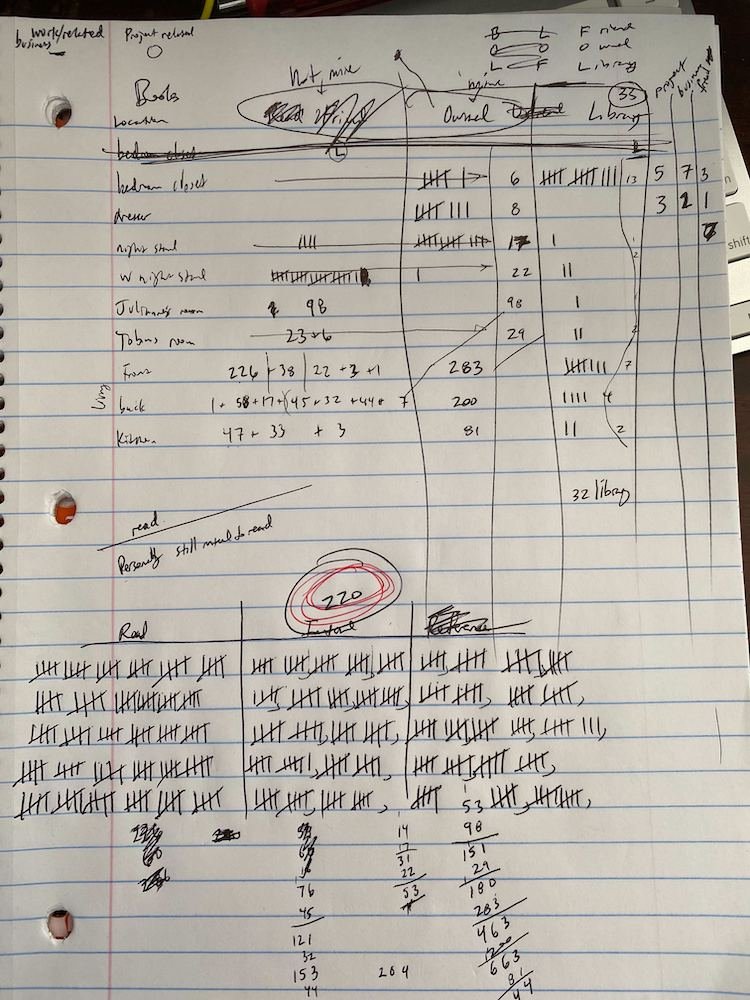We believe modeling is a practice that leads to understanding. So each week for several months the Understanding Group team did just that—we practiced modeling. On Fridays we got together for an hour to both critique and explain our models to one another in the hopes of mutual growth in this vital skill. There are so many options when modeling, and we thought it would be fun to show how different and creative models can be.
For this challenge, TUG staff members were invited to create a model centered around their libraries or relationships with/to books. Below are just some of this week’s entries.
Motivations for Owning a Book
This model is a masterpiece in creating and utilizing a framework that satisfies the intent. Each individual grid shows the motivations for owning a particular book. The motivation is expressed as the intersection of the reason why they have a physical copy of the book (read, decorate, preserve, fill space, and “just wanted to buy something”) and the reason why they are interested in the content (learn, grow, entertain, cook, and “nothing in particular”). The 20 titles were chosen at random by scanning their home library. An aggregate grid shows all 20 of the individual titles' grids overlayed on one another. Darker colored squares represent the more common reasons for owning a book, while lighter squares are less common reasons.
Sketches of earlier versions of the model that explore different layouts and labels for the information
Books Owned compared to Books Read
This model takes an inventory of the total amount of books in each room and then assesses what portion of them have been read. This model can be used as a motivational tool to read the books you already have before buying too many new ones. Notice we said too many—because don’t stop buying books!
Distance Between Book Storage and Utilization
We call this one “Walkability of Books, a Discussion in Logistics.” This model analyzed what types of books are in which areas of the home. This visualization helped the owner realize that having cookbooks in the laundry room isn’t the most efficient arrangement and provided opportunity for consideration of a better way to store books in the house by type. This model also includes a helpful sketch with indications of the direction the model will take.
Books Owned Vs Unread Books Still of Interest
Many of the best models come from rough sketches on a lined piece of paper or napkin. This person wanted to figure out how many books they owned and also what percentage of the unread ones they still wanted to read. It is a good exercise for clearing a house of some books before a move to a new home.
Next Time: Model prompt #3: - “Create a model that helps us understand the sounds in your home.”
If you are an organization that is in need of solving a complex problem, Contact Us Here.
If you’re looking to hone your skill of modeling, then join us at our next Modeling for Clarity Workshop.







